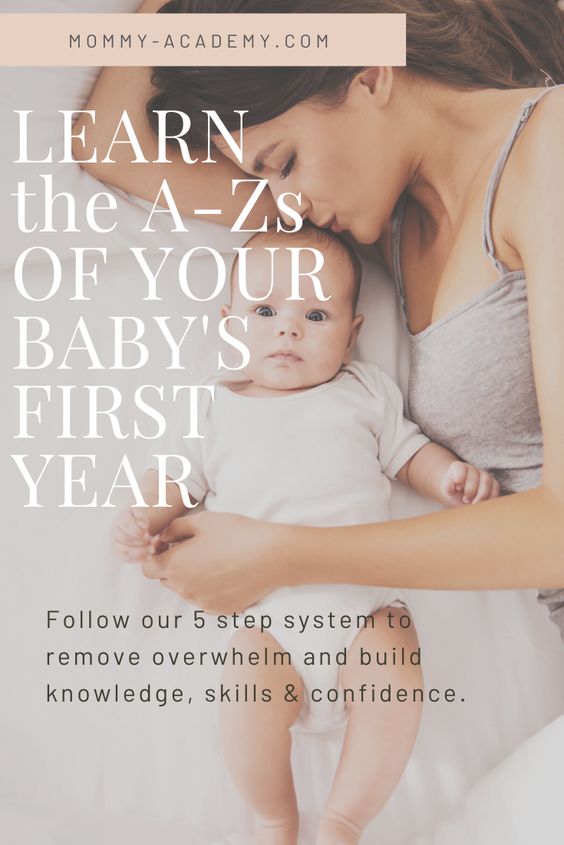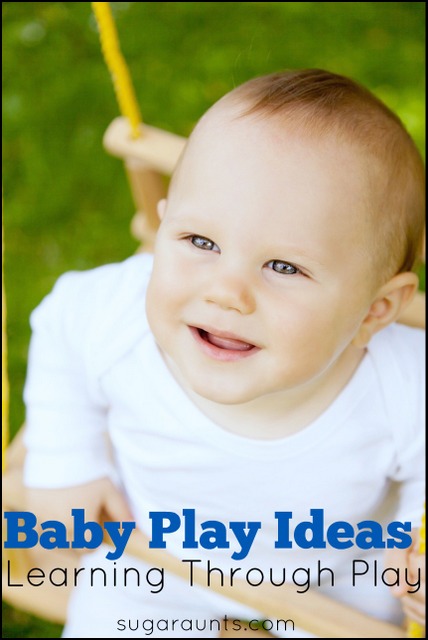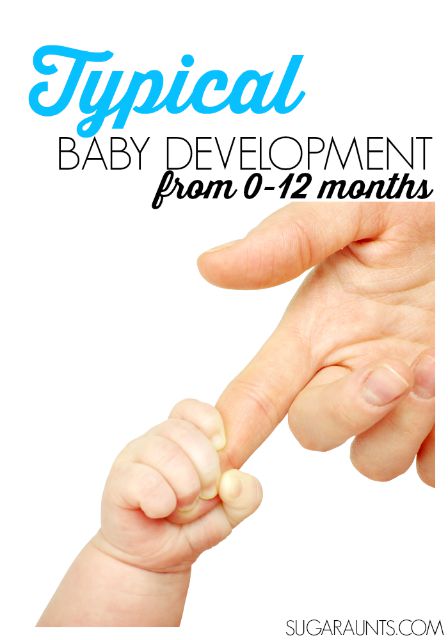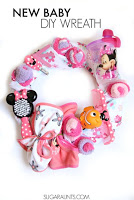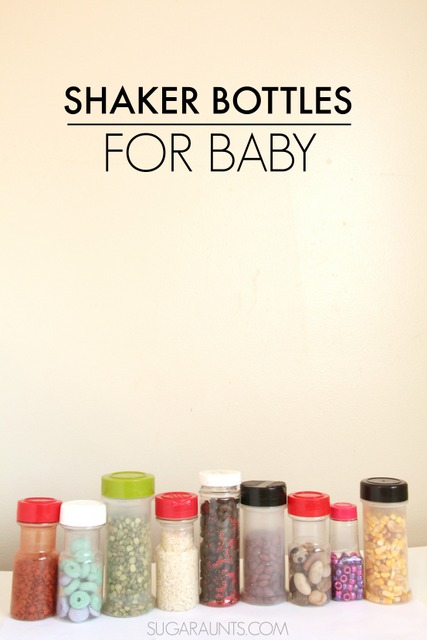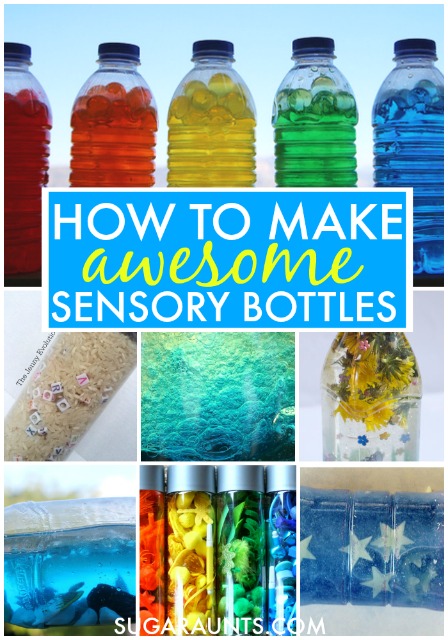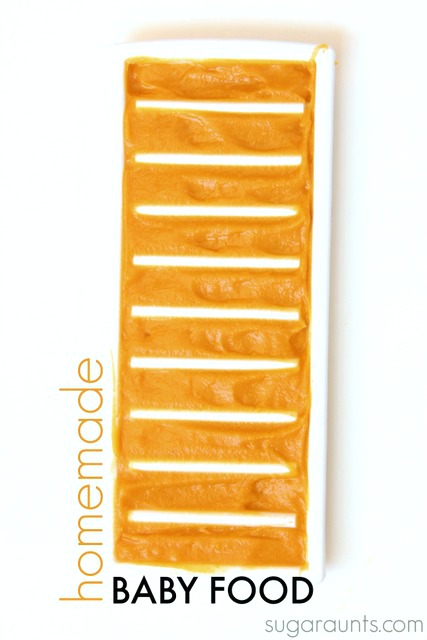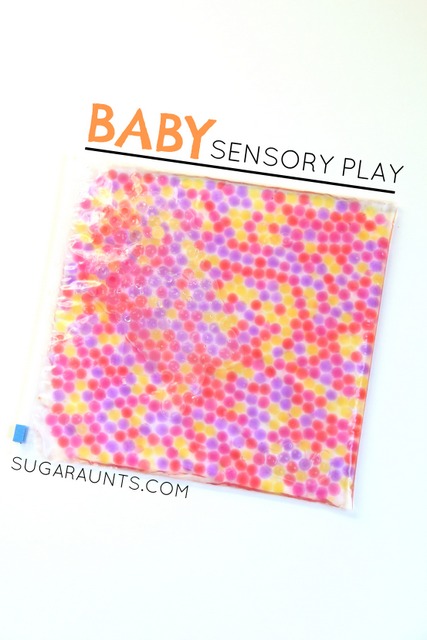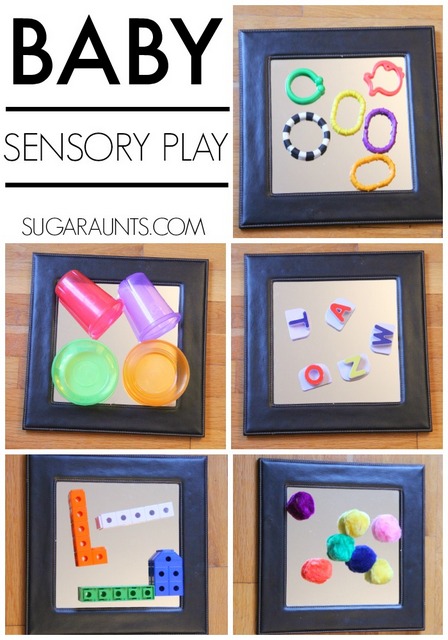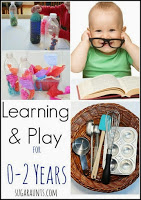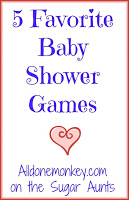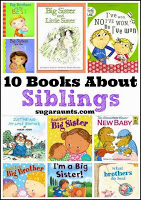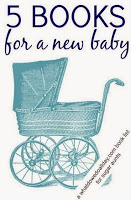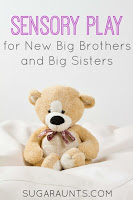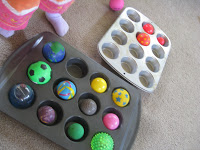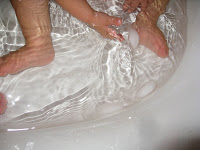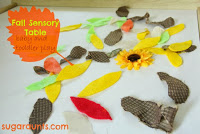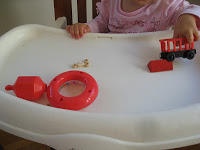Ok, you just brought your newborn baby home from the hospital. Are you thinking, “Now what?!” Sometimes new moms feel like they’ve been handed over a fragile jewel when they have their first baby. What if you had infant occupational therapy activities at your fingertips? What if you had tips and tools for baby development, baby milestones, and therapist-approved baby play activities designed to promote development, cognitive skills, learning, and baby brain building in all the best ways? Read on for strategies to use in occupational therapy for babies and tips from a pediatric occupational therapist, and strategies that can help you move through baby’s first year with confidence.
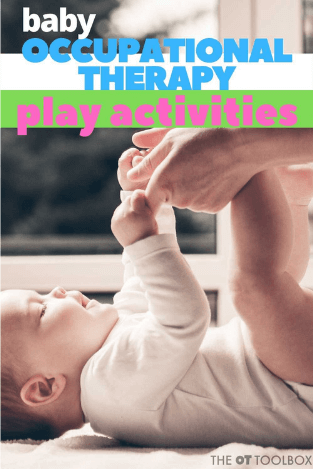
Occupational Therapy for Babies
Playing with your baby is a way to connect with them. It’s a means for helping them feel secure and nurtured. And more than that, play is the essential occupation of kids! So, playing with your baby may not look like typical kid play, or a major process, but it is an essential one. Here, we’ll break down the process of playing with your baby in ways that boost child development. You’ll also find some fun and creative ways to help your little one learn.
Baby Milestones and Play
Child development begins in the womb. As that baby develops and grows in utero, they are already stretching and moving, practicing reach and grasp, and stretching against the walls of their mother’s uterus. That push and pull that you felt as an expecting mom was your little one gaining strength and sensory input! That motor development continues after birth, and that’s when the fun begins because as mom or dad, we get to snuggle that little one, engage with them, and watch their every move!
Child development and developmental milestones can throw a parent for a loop. It’s so important to remember that each child is different. Each child reaches their developmental milestones at their own rate.
What is a Developmental Milestone?
What is a milestone? A “milestone” is basically a checkpoint for physical or behavioral development. These are basic levels that a child should achieve as they grow. The milestones and the age ranges that we’re talking about here (and what you see on Google!) is so vastly approximate. One child may reach for and shake a rattle at 2 months and another child does the same at 5 months.
When it comes to developmental milestones, the important thing to remember is that the child is progressing through the milestones. If you have concerns for your little one, speak up! Ask your child’s pediatrician to make sure you’re on the right track.
Disclaimer: Remember that the information presented here is informational and educational, but if you suspect a real issue, you should reach out to the pediatrician. Keep in mind that some kids skip milestones (like crawling), and there can be some implications down the road. Another consideration is that when looking at milestones, you should adjust for prematurity. A baby that is born weeks early has some development to gain that may have been achieved in utero.
Activities for Infants and Babies
Infant occupational therapy activities are guided by play. Also, each play idea should be guided by judgement and based on infant development. Occupational therapy for babies uses play as the child’s primary occupation to work on certain skills in babies but also to guide therapy.
Never leave a baby alone during play activities like some of the ideas listed here. Some babies may be at different developmental levels despite their chronological age. These activities are not intended as treatment or a replacement for occupational therapy interventions. This information is educational only.
Baby developmental milestones
Baby milestones fall into three stages:
- Primitive Stage- Birth to 3 months
- Transitional Stage- 4-9 months
- Mature Stage- 10-12 months
The Primitive Stage is that time right after birth and lasts up to around the three month mark. During this stage we’ll see the baby interact visually with the world around them. They watch, listen, and make basic movements.
The Transitional Stage is that period of time around 4 months to 9 months of age. We’ll see greater development of things like grasp and controlled movements, effort, interaction with the world around them, and intentional movements.
The Mature Stage occurs around 10 to 12 months. During this period, baby freely moves their body to manipulate items in their world. They improve and refine mobility, grasp, and communication.
Each stage of baby development has their own hallmark milestones.
Typical development follows a pattern in child development. Progression through developmental milestones typically occurs in areas of fine motor skills, gross motor skills, the senses, cognitive development, and social development. Use these play activities as development-based activities to guide and foster play.
Baby Play during the first 3 months
During the first three months, you will see changes like the ones listed below. Use these movements and development to guide play.
Baby development begins before birth and continues to evolve into functional skills each and every day. From birth, a baby typically demonstrates random limb movements and a rounded back with drooped head. Asymmetrical postures dominate and no weight is bared through the legs when a baby is held up. By one month, baby is able to rotate their head and lift their head momentarily.
Asymmetrical postures continue to dominate At three months, baby holds their head mostly in midline and is able to bob their head in supported sitting. At three months, baby can visually follow a dangling toy from side to side. Baby may roll to either side from their back.
- Following a person with their eyes
- Lifting their head
- Pushing up to their arms while lying in tummy time
- Holding the head up while laying on their belly
- Opening their fist into stretched fingers
- Bringing hands to the mouth
- Reaching for toys
- Turns toward sounds or voices
- Makes eye contact
- Moving legs and arms
Play Ideas for Babies 0-3 months:
- Tummy time on parent’s chest
- Tummy time on play mat
- Shake a rattle or noise-making toys
- Gently clap baby’s hands together
- Gently move feet as if peddling a bike
- Make various facial expressions
- Read to baby
- Tummy time blanket and variety of toys
- Sing and talk to baby
- Attach colorful toys to a baby gym
- Baby massage and back rubs
- Snuggle and cuddle time
- Move toys across bay’s field of vision
Baby Play during 4-9 months
During the Transitional Stage (4-9 months), there is so much happening! Purposeful movement drives development and development occurs through purposeful movement. This is a fun series of months. You’ll see motor, sensory, and communication milestones like the ones listed below. Use these changes in movement and activity to guide play.
At 4-5 months, baby kicks and waves arms and shows excitement with movements. They are unable to typically manipulate or purposefully grasp items. However, baby will demonstrate a strong grasp when an item such as a rattle is placed in their hand. They are unable to let go of an item in their hand. By six months, baby will demonstrate a greater variety of gross motor patterns. You will see movements of elbows and knees and they follow objects with their eyes in all directions. At 6 months, object exploration begins with crude manipulation.
At 7-8 months, baby will take objects out of a container and drop them with crude manipulations and exaggerated movements. Baby is typically able to sit up by leaning forward for support.
- Rolls from back to belly and belly to back
- Stands with support, putting weight through legs
- Holds the head and neck steady in sitting
- Moves from supported sitting to independent sitting
- Bears weight through hands in crawling position
- Reaches for toys while lying in the belly
- Moves toys from one hand to the other
- Uses both hands to manipulate and explore toys
- Reacts to sudden sounds
- Listen and responds to sounds or voices
- Begins to babble
- Shows an interest in foods
- Imitates others in play
- Focuses on near and far objects
- Investigates textures, size, shapes, and details of objects
Baby play for 4-9 months:
- Songs and fingerplays
- Talk to baby
- Mirror play
- Crinkle fabric soft toys
- Noisy toys
- Taggie toys
- Play outside in grass
- Play with balls
- Put in/take out games
- Board books
- Noise making toys
- Eye-hand coordination activities
- Bubbles
- Basket of toys
- Pull toys to encourage crawling
- Toys with a variety of textures
- Noise making toys or shakers
- Bath toys
- Baby tunnel
- Put toys or baby-safe objects in an empty box or basket
- Hide toys with a blanket for baby to find
- Read
- Soft toys
- Bath toys
- Textured board books
Baby Play during 10-12 months
During the tail end of the first year, you see big strides in controlled movement, motor skills, interaction, coordination, fine motor skills. You see stronger eye-hand coordination, and intentional movement. You see refined fine motor skills, improved mobility, and a stronger baby. Below are the developmental milestones that you can use to guide play.
At 9-10 months, baby will explore more of his environment and will show isolated movements of fingers as they poke and explore items. They can pick up small items and begin to demonstrate purposeful play.
- Pulls up to stand at furniture
- Takes first steps holding onto furniture to “cruise”
- Moves in various positions from laying to sitting, sitting to pulling up to stand, etc.
- Drops toys into containers and grabs them to manipulate
- Uses a pincer grasp (holds small items like cereal between the pads of the thumb and pointer finger)
- Explores toys with mouth, hands, and visually
- Says first words
- Feeds self with finger foods
- Takes first steps without support
Baby Play Ideas for 10-12 months
- Play and sing music
- Play peek-a-boo
- Interactive songs like “Patty Cake” and “Row, row, row your boat”
- Roll a ball back and forth
- Music
- Ring stacking toy
- Color with crayons or markers on large cardboard box on floor
- Blow kisses “Soooo big”
- Bang pots and pans
- Stack, sort, and move kitchen items
- Living room obstacle course
- Water play
- Palm-sized crayons
- Read books
- Sort colors
- Pretend play
- Sorting games
- Books
- Stacking toys
- Blocks
- Large puzzle boards
- Shape sorting
Babies are such an amazing miniature human. They are developing at a rapid pace and taking in the senses of our world with wide eyes. Simply holding and talking to your baby is such a wonderful sensory experience. Then there is the sensory overload of bath time. We’ve got some easy play ideas for babies and young toddlers here, as they take on and take in the world around them.
Play Ideas for Babies based on Typical Development
Note: This is not a complete list of Baby’s development. There are stages of typical development and changes in each skill area, as well as positional developmental changes. Watch this space for more baby developmental play and information.
Beyond this, baby is continuously developing in their gross motor, fine motor, hand dominance, language, and visual perceptual, skills. All of these areas can be built on with stimulating and encouraging play environments. Try some of these play ideas with your baby:
Spatial Awareness for Baby– Understand how visual spatial skills develop and how this spatial awareness impacts learning, coordination, and motor skills like crawling, feeding and play.
Tummy Time Myths– Understand everything about tummy time that occupational therapists wish you knees.
Blue-Themed Sensory Play for Babies and Toddlers– Work on visual motor skills, coordination, using both sides of the hands, crossing midline, tummy time, crawling, and movement.
Baby Brain Building with Balls– Encourage eye-hand coordination, visual tracking, visual scanning, bilateral coordination, crossing midline, motor planning, and more.
Floor Play for Babies and Toddlers
Fine Motor Play with Tissue Paper
Play Tunnel Activities for Babies
DIY Tambourine Craft for Little Ones
Christmas Ornament Sorting Activity for Toddlers/ Sensory Play for Babies
Course for New Moms
As occupational therapists, we KNOW the value of movement for little ones. We KNOW that babies need tummy time and a chance to move on the floor without use of the Bumbo seat, swing, and other baby positioners. Baby positioner devices like these can impact development and result in container baby syndrome.
We KNOW that play is the child’s primary occupation and that through play, they develop motor skills, cognition, language, and so much more. As OTs, we have a distinct value in sharing this information with the world. If you are working with families in the early intervention arena, these are some common questions that we answer every day.
Baby Play Ideas
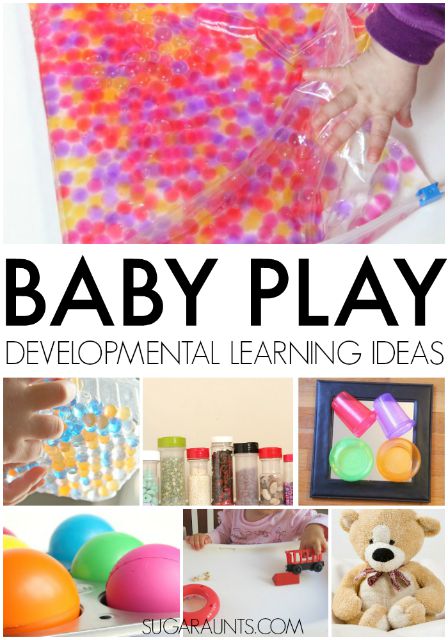
Finally, for more baby resources, be sure to check out the baby play ideas listed below. They are loaded with activities ideas and baby play info. Let’s get those babies moving so they thrive as big kids!
How to Make Homemade Blender Baby Food | Baby Safe Waterbead Sensory Play | Baby Mirror Play | Learning Activities for Babies Aged 0-2
Baby Brain Building| Baby Ice and Bath
Autumn Themed Sensory Table for Babies | Learning Apples and Red
Learning Colors Cup Play | Discovery Bottles | Playing With Color

Colleen Beck, OTR/L has been an occupational therapist since 2000, working in school-based, hand therapy, outpatient peds, EI, and SNF. Colleen created The OT Toolbox to inspire therapists, teachers, and parents with easy and fun tools to help children thrive. Read her story about going from an OT making $3/hour (after paying for kids’ childcare) to a full-time OT resource creator for millions of readers. Want to collaborate? Send an email to contact@theottoolbox.com.


